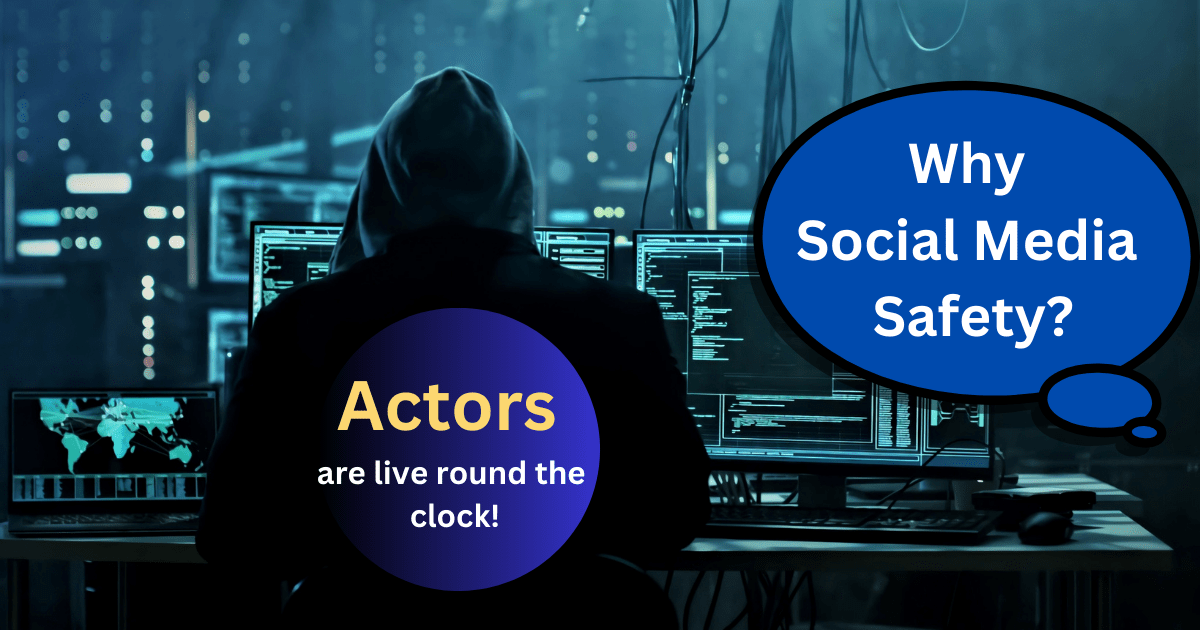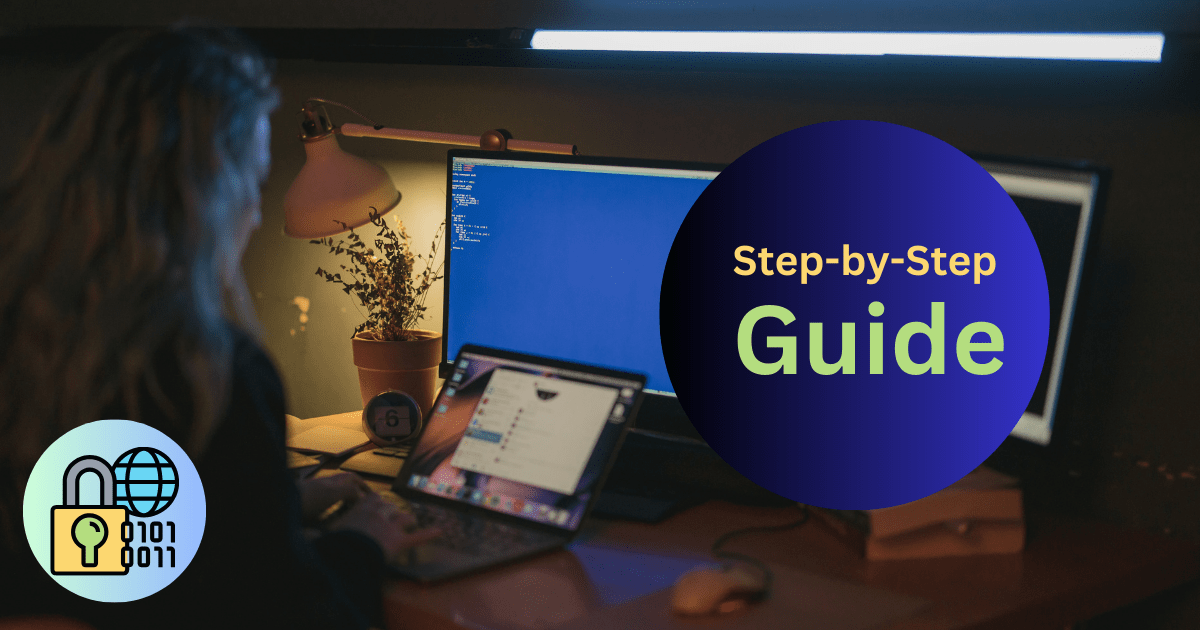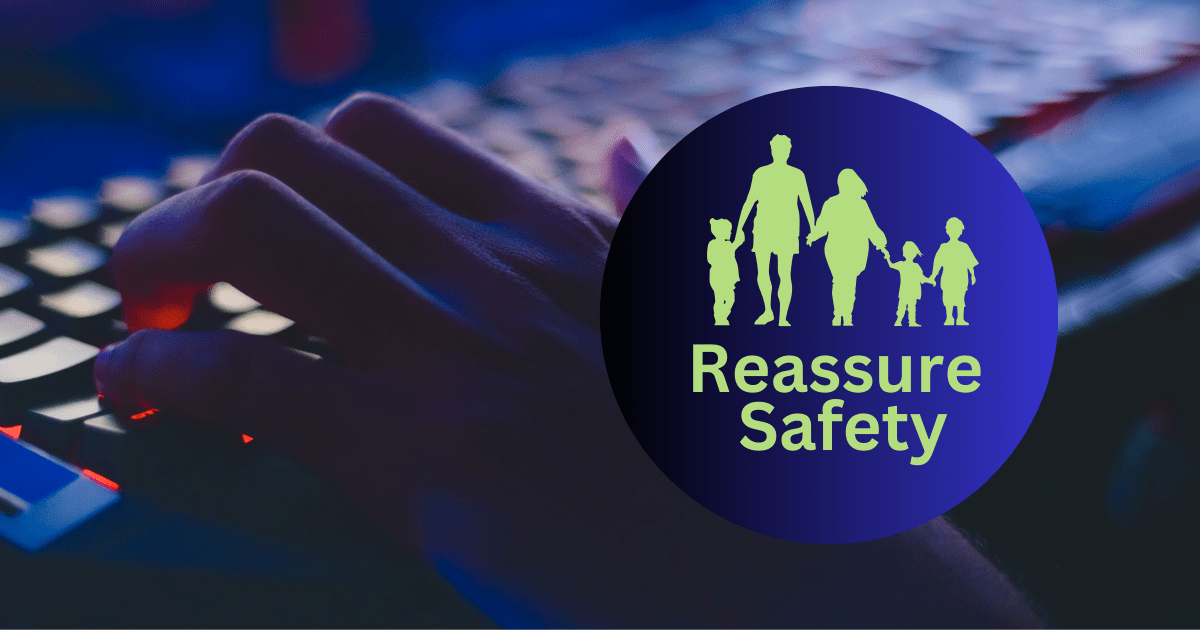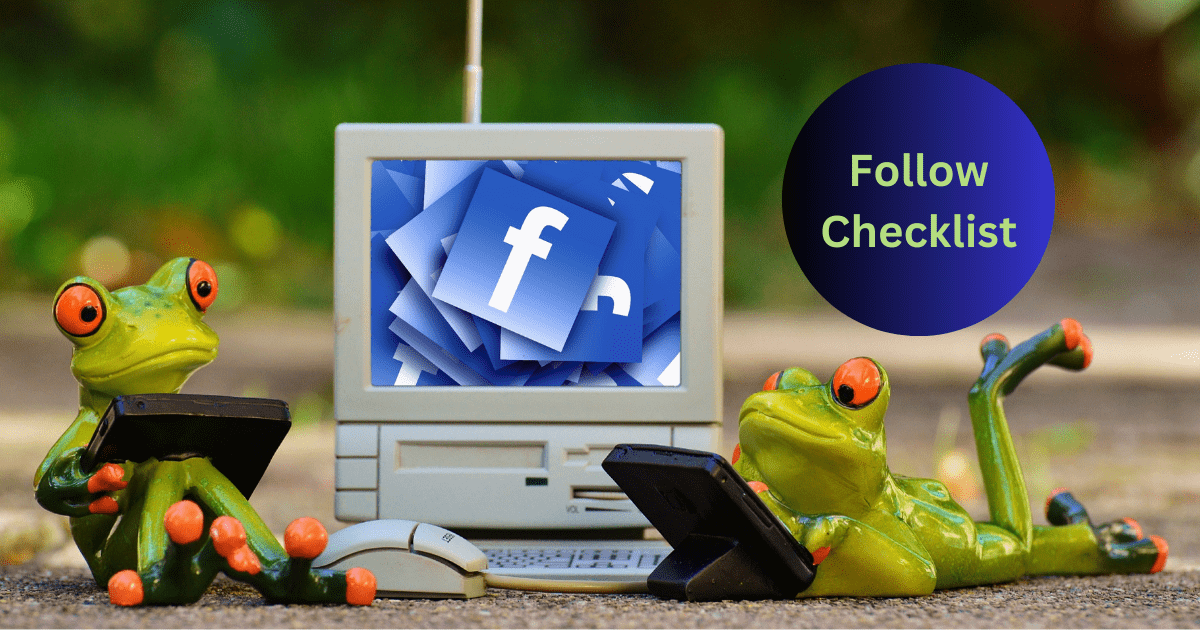Do you care about the safety issues in social media? How do you handle them to avoid further risk? Perhaps, it depends on the social media experience you have in the meantime.
But crime stat shows how severe may occur on social media users if they do not take enough safety measures. Here's a true image, a look below, from USA authority, that might change your intention on how to pay your presence on social media:
In the first half of 2019, 4.1 billion records were compromised, according to social media crime data. One in two American internet users had account breaches in 2021. 53.35 million US people were impacted by cybercrime in the first half of 2022.
Phishing, smishing, and business email compromise (BEC) assaults are the three main categories of cybercrime in the US. Organizations in the US saw 461 similar events in 2022.
The FBI reports that there were 800,944 complaints of cybercrime in 2022, which is a 5% reduction from 2021. An average data breach in the US costs $9.44M. By 2023, it is expected that cybercrime will cost $8 trillion.
But this write-up is Family-friendly social media safety refers to the actions and measures that users should take to keep their family safe online.
Family members, both children and adults, need to be aware of these safety precautions given the possible risks involved with sharing personal information and interacting with others online.
Social media has risks, but it can be a useful tool for keeping in touch with loved ones. You may ensure that your family members use social media platforms responsibly and securely by adhering to a clear set of safety rules and encouraging an open communication environment.
Why Social Media Safety First?
Reasons are located in the crime data as stated earlier. In addition, social media safety is critically important for family individuals for below several reasons:

Since evil players are live always.
Protection from Online Predators: Social media platforms are open to everyone, including those with bad intentions. Family members, particularly kids and teenagers, might not always be able to identify possible threats.
By taking precautions, they can be shielded from online predators who are looking to get access to personal information or build destructive relationships.
Privacy Concerns: On social media, divulging too much private information might result in privacy violations and identity theft. Family members need to be aware of the dangers of excessive data sharing and have a basic understanding of data security.
Cyberbullying Prevention: Cyberbullying frequently takes place on social media platforms. Family members can learn to recognize and respond to instances of cyberbullying by encouraging safety, resulting in a safer online environment.
Mental and Emotional Well-Being: Social media use that is excessive or harmful can be harmful to one's mental and emotional well-being. Family members must be informed about appropriate social media use and how it may affect their well-being to promote safety.
Reputation Management: An individual's reputation can be damaged by offensive social media posts or remarks, which can have an impact on both their personal and professional lives. Family members are made aware of the value of preserving a healthy internet reputation thanks to safety measures.
Preventing Scams and Phishing: Social media is commonly used by scammers to target specific people. Family members can protect themselves from falling for scams that could cause financial loss or identity theft by being alert and aware of phishing techniques.
Strengthening Digital Literacy: Family members' digital literacy abilities are strengthened when they are taught about social media safety. This information can be useful for navigating the larger digital environment as well as using social media.
Healthy Online Relationships: Safety initiatives encourage positive online interactions and connections. Family members can learn to distinguish between sincere relationships and ones that could be damaging or dishonest.
Avoiding Legal Issues: Legal issues, such as defamation, copyright infringement, or harassment, can result from improper use of social media. Foreseeing the legal repercussions of internet behavior is essential for avoiding legal issues.
Maintaining Trust and Communication: Within a family, establishing social media safety rules can promote open communication and trust. Family support and safety can improve when members feel comfortable talking about their internet experiences and worries.
Digital Footprint Awareness: Family members who are cognizant of the information published on social media can better manage their digital footprint. This is crucial since lasting digital traces can affect prospects.
Preventing Addiction: Safety measures can aid family members in identifying and addressing addictive behaviors. Social media addiction can have detrimental effects on an individual's everyday life, including family relationships, employment, and general well-being.
In conclusion, family members need social media safety because it safeguards them from online dangers, protects their privacy, encourages responsible online conduct, and improves their general well-being and digital literacy.
Family members need to be taught how to use social media platforms securely and responsibly by parents and other family members who are responsible for them.
How To Secure Social Media Safety for Family
Here, I'm going to the three easily repeated awareness exercises you can use to create a solid social media safety plan for your family's well-being.
1. A Step-by-Step Safety Guide To Your Family
A combination of education, communication, and practical measures to safeguard each family member's online presence is required to ensure social media safety.

A quick guide to preserve family safety
Here's a step-by-step guide to help ensure the safety of each individual in your family:
1.1. Education and Awareness
- Start Early: Children should be taught about online safety at an early age. Describe the advantages and potential risks of social media.
- Age-Appropriate Content: Make sure your younger family members are adhering to the regulations of any social media networks they use.
- Cyberbullying Awareness: Talk about what cyberbullying is, how to spot it, and how to handle it. Encourage open communication among family members so they can freely share any problems they may be having.
1.2. Privacy Settings
- Profile Privacy: Help each family member turn on private access on their social media accounts to restrict who can view their posts and private data.
- Review Settings: Review and update your privacy settings frequently, as social media sites may alter them over time.
- Limit Sharing: Encourage family members to refrain from posting their home addresses and phone numbers online and to share personal information sparingly.
1.3. Strong Passwords and Two-Factor Authentication (2FA)
- Create Secure Passwords: Show family members how to come up with secure, one-of-a-kind passwords for all of their social media accounts.
- Use Password Management: To store and create complicated passwords, think about utilizing reliable password management.
- Activate 2FA: Where possible, turn on two-factor authentication to further secure their accounts.
1.4. Phishing Awareness
- Identify Phishing Attempts: Inform family members how to spot phishing attempts, such as dubious links or emails requesting personal data.
- Verify Contacts: Suggest that they always double-check the legitimacy of requests for personal information, even if they appear to be coming from friends.
1.5. Safe Friend and Connection Acceptance
- Selective Acceptance: Encourage family members to accept friend or connection requests only from persons they know in person.
- Report and Block: Educate them on how to report and block those who behave improperly or destructively.
1.6. Content Sharing
- Think Before Posting: Encourage family members to consider the material they publish by telling them to "Think Before Posting." It can be difficult to take something down once it has been uploaded.
- Respect Other's Privacy: Remind them to be considerate of others' privacy and to ask for permission before posting any images or details about friends or family members.
1.7. Location Services
- Disable Location Sharing: Tell family members to avoid identifying their whereabouts in posts unless required. Sharing a location could jeopardize their security.
1.8. Monitoring for Parents
- Parental Control Software: Especially for younger users, parents may want to think about utilizing parental control software to keep an eye on their children's social media use. But this needs to be tempered with open communication and developing trust.
1.9. Regular Check-Ins
- Open Communication: Keep lines of communication open with family members when discussing their online activities. Check in frequently to talk about any issues or queries they might have.
1.10. Reporting Tools
- Become familiar with Reporting: Ensure that family members are aware of the proper procedures for reporting offensive people or content on social media platforms.
- Blocking: Show them how to block users who behave negatively.
1.11. Digital Breaks
- To prevent usage and eventual addiction, encourage family members to take regular breaks from social media.
1.12. Lead by Example
- By using safe social media practices yourself, you may set a good example for others. It's common for kids to learn best by watching their parents.
1.13. Legal Implications
- Inform family members of the possible legal repercussions of their internet behavior, such as publishing libelous material or breaking copyright laws.
1.14. Seek Help When Needed
- Don't be afraid to contact the social media platform's support team for assistance if you experience major problems like cyberbullying or harassment, or to contact law authorities if required.
Be mindful that maintaining social media safety is a continuous endeavor. To ensure that your family members are safe and responsible users of social media, regularly review and reiterate these safety precautions with them.
Never forget to use significant cybersecurity tools and cybersecurity software for total level playing and in-depth security maintenance.
2. Reassure Safety First in Real Practices
Make sure to practice your tasks with your family to ensure absolute safety. Here are some updated major social media safety factors for you and your family:

Keep them under practice by each individuals.
2.1. Privacy Settings
Teach family members how to check and modify their social media privacy settings. Make sure that profiles are set to private, allowing only friends and people you trust to view them. Encourage them to examine and adjust these settings regularly because platforms occasionally alter them.
2.2. Selective Acceptance
Family members should be warned not to accept friend or connection requests from shady or unfamiliar profiles. They should only communicate with real-world acquaintances and persons they can trust.
2.3. Password Security
Insist on the necessity of using strong, one-of-a-kind passwords for each social media account. Put letters, numbers, and symbols together. To safely handle passwords, think about utilizing a reliable password manager.
2.4. Phishing Awareness
Educate family members about phishing scams, which use phony emails or texts to try to fool people into disclosing personal information. Don't forget to remind kids not to click on shady links or divulge private information on social media.
2.5. Cyberbullying Awareness
With your kids, talk about the problem of cyberbullying and potential warning signs. Encourage open communication so kids feel comfortable coming to you or another trusted adult if they encounter any instances of cyberbullying.
2.6. Content Sharing
Encourage sharing of appropriate material. Remind family members that it may be challenging to erase something once it has been placed online. They should consider their posts carefully and refrain from posting private or sensitive material.
2.7. Location Settings
Unless necessary, turn off location sharing. Users can tag their location in posts on several social media sites, which can make their whereabouts known. Make sure to disable this feature or only occasionally use it.
2.8. Limit Personal Information
Encourage family members to refrain from including too much-identifying information on their accounts, such as contact information (phone numbers, addresses, etc.). Malicious actors may use this information for their purposes.
2.9. Two-Factor Authentication (2FA)
Where possible, enable 2FA for social media accounts. By requiring a second verification step, such as a code texted to a mobile device, this adds an extra degree of protection.
2.10. Monitoring for Children
Parents should think about adopting monitoring applications or parental control software to keep a check on their children's social media usage. However, to preserve a positive parent-child relationship, balance this with open communication and trust-building.
2.11. Regular Check-Ins
Establish a schedule for talking with family members about social media safety. Encourage them to express any worries or social media-related experiences they may have.
2.12. Reporting Tools
Introduce family members to the banning and reporting tools offered by social media sites. They should be able to report offensive material or people, and if required, block specific users.
3. Checklist: Recognized Issues & Safety Measures

Identify, create and follow safety checklist
Certainly, social media safety for families encompasses a range of recognized issues and concerns. Here's a list of some key areas that families need to be aware of and address:
3.1. Cyberbullying
- Issue: Harassment, threats, or humiliation directed at individuals on social media.
- Safety Measure: Teach family members how to spot cyberbullying, how to report it, and how to get help if they need it.
3.2. Privacy and Data Protection
- Issue: Personal information, including contact details, location, and photos, can be exposed.
- Safety Measure: Establish stringent privacy controls, place restrictions on sharing, and inform family members of the value of keeping personal information safe.
3.3. Online Predators
- Issue: People with bad intentions can use social media to find and groom family members who are at risk.
- Safety Measure: Children should be made aware of the dangers, encouraged to communicate freely, and occasionally watched over when using the internet.
3.4. Phishing and Scams
- Issue: Deceptive attempts to steal personal information, passwords, or money.
- Safety Measure: Teach family members how to spot phishing scams, stay away from dubious sites, and double-check requests for personal information.
3.5. Addiction and Screen Time
- Issue: Overuse of social media can result in addiction and have a severe impact on relationships with family members and one's mental health.
- Safety Measure: Limit your screen usage healthily and promote offline activities.
3.6.
Cybersecurity Threats
- Issue: Malware, hacking, and identity theft can occur through social media.
- Safety Measure: Maintain software and hardware up-to-date, set up two-factor authentication, and use secure passwords.
3.7. Online Reputation Management
- Issue: Inappropriate posts or comments can harm one's reputation.
- Safety Measure: Teach ethical online conduct and the value of preserving a positive online reputation.
3.8. Misinformation and Fake News
- Issue: False or misleading information can spread rapidly on social media, affecting beliefs and decision-making.
- Safety Measure: Promote logical thought, fact-checking, and information sharing.
3.9. Ethical Browsing and Content Sharing
- Issue: It is possible to encounter or distribute inappropriate or dangerous materials, such as hate speech or pornographic material.
- Safety Measure: Promote responsible content sharing, the reporting of offensive information, and respect for platform rules as a safety measure.
3.10.
Emotional Well-Being
- Issue: Comparing oneself to others on social media might cause emotions of inadequacy, anxiety, or despair.
- Safety Measure: Encourage conversations on responsible social media use, self-worth, and asking for assistance when necessary.
3.11. Digital Footprint
- Issue: Online information can leave a lasting record and affect present and prospects.
- Safety Measure: Teach family members how to safely manage their digital footprint as a safety measure.
3.12. Online Challenges and Trends
- Issue: Certain viral challenges or trends may promote unsafe behavior or be dangerous.
- Safety Measure: Educate yourself on online trends and talk to your family about any potential concerns.
3.13. Criminal Activities
- Issue: Some people engage in unlawful activities on social media, like trafficking in illegal drugs or inciting violence.
- Safety Measure: Inform family members of the value of abstaining from or opposing illicit online activities.
3.14. Online Gaming Safety
- Issue: Online gaming environments can expose users to offensive language and behavior.
- Safety Measure: Monitor and restrict internet gaming for younger family members, and teach them about responsible gaming, as a safety measure.
3.15. Digital Literacy
- Issue: Unsafe online behavior might result from a lack of digital literacy.
- Safety Measure: Online, foster the development of discernment and critical thinking abilities as part of digital literacy.
3.16. Mental Health
- Issue: Use of social media in excess can exacerbate mental health problems including stress and anxiety.
- Safety Measure: Encourage self-care and balance, and be alert for any warning signs in family members.
However, every teenagers deserves to learn social media safety books can help them for awareness. The safety and well-being of family members in the digital age must be ensured by addressing these acknowledged challenges through education, honest communication, and preventative safety measures.
Since children are very curious about new things and sensitive parts of the family members, make sure your parenting includes child safety and security at home as well as secure internet safety for kids in your special care.
Conclusion
Protecting family members' safety on social media is crucial in an increasingly digital environment. The cornerstones of a secure online presence are open communication, education, and responsible usage.
Families need to promote critical thinking, establish screen time restrictions, and teach appropriate material sharing. Place a significant emphasis on the necessity of privacy settings, secure passwords, and understanding internet hazards.
Prioritizing these actions can help families create a harmonious coexistence of the online and offline worlds, enhancing everyone's well-being while safely using social media's advantages.